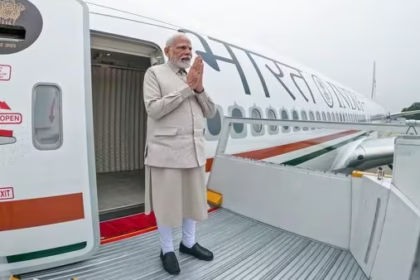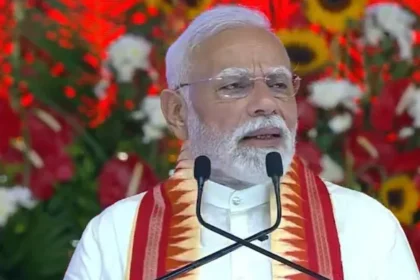Rishabh Pant’s Injury in Manchester Sends Shockwaves Through Indian Cricket
When a nation’s cricketing heartbeat is silenced for a moment, it often begins with a gasp from the commentary box and a collective pause from millions of fans. That’s precisely what unfolded at Old Trafford, Manchester, when Rishabh Pant, India’s mercurial wicketkeeper-batsman, went down clutching his leg during the second session of Day 2 in the final Test against England. What initially appeared to be a routine knock swiftly spiraled into a moment of deep concern—echoed both on-field and off it, none more emotionally than by former cricketer and analyst Aakash Chopra, who voiced what every Indian fan feared: “I just hope it’s not a broken bone.”
The visuals were stark. Pant, known for his exuberant agility behind the stumps and aggressive counter-punching with the bat, lay grimacing on the turf after attempting a sharp single. A miscalculated pivot, a twist in the wrong direction, and what followed was a rare sight: Rishabh Pant limping, wincing, and eventually being escorted off the ground by the physio team.
While cricket has witnessed its fair share of on-field injuries, Pant’s departure felt different. It wasn’t just about the physical toll on one player—it symbolized a moment of disruption in India’s meticulously built overseas campaign. As India battles England in what many are calling one of the most tactically intense Test series in recent years, Pant’s role is irreplaceable—not just as a player but as a symbol of India’s fearless new generation.
Aakash Chopra’s Honest Concern: “I Just Hope It’s Not a Broken Bone”
Aakash Chopra, former India opener and now a respected voice in the cricketing broadcast circuit, was among the first to vocalize what the cricket fraternity silently feared. His candid reaction on air—“I just hope it’s not a broken bone”—wasn’t dramatized; it was real, rooted in years of understanding the game, the human body’s limitations, and the emotional trauma injuries bring.
Chopra’s words struck a chord not only with viewers but with former cricketers and experts across social platforms. Within minutes, hashtags like #RishabhPant, #GetWellSoonPant, and #IndiaVsEngland were trending on X (formerly Twitter), with fans expressing concern, former players offering support, and pundits beginning the grim speculation over India’s backup plans.
Pant: A Critical Cog in India’s Test Machine
Rishabh Pant’s evolution over the past few years has been nothing short of phenomenal. From being a flamboyant but inconsistent performer in his early days to emerging as a match-winner in overseas Tests—think Brisbane 2021 or Cape Town 2022—Pant has established himself as one of India’s most reliable assets.
His dual role as a wicketkeeper and a middle-order batter gives India the flexibility that few teams enjoy. More importantly, his counter-attacking style often shifts momentum in high-pressure situations. In England, where conditions constantly test a batter’s technique and temperament, Pant’s audacity brings balance to India’s otherwise orthodox batting lineup.
The timing of this injury, therefore, couldn’t have been worse. With the series delicately poised and India hoping to script a historic series win on English soil, losing a player of Pant’s caliber isn’t just a personnel setback—it’s a psychological blow.
Dressing Room Dynamics: Shock, Silence, and Shuffling Plans
Inside the Indian dressing room, the mood was reportedly tense. The team, according to sources close to the BCCI medical unit, is awaiting the results of a detailed scan. The initial assessment, while inconclusive, has ruled out immediate ligament damage—a relief—but there are still concerns regarding a possible hairline fracture or bone stress.
Head coach Rahul Dravid, known for his calm demeanor, was seen in intense discussion with the team physio and support staff. Vice-captain Jasprit Bumrah, who has been leading the bowling attack with fierce intensity this series, reportedly checked on Pant post-innings. Team captain Rohit Sharma is expected to issue an official update after the day’s play.
Until then, fans are left to speculate, analysts are left to dissect, and the team must regroup—with or without one of its key players.
As Day 2 drew to a close at Old Trafford, the echoes of cricket weren’t just confined to the thwack of leather on willow. Instead, hushed murmurs dominated conversations around the stadium and on digital timelines, all centered around one question: How bad is it? India’s talismanic wicketkeeper-batsman, Rishabh Pant, remained under medical supervision after being helped off the field with what appeared to be a lower limb injury. For a nation emotionally tethered to its cricketing heroes, this wasn’t just a sporting incident—it was a moment of national unease.
By the time team sources confirmed that Pant had undergone initial scans at a medical facility in Manchester, speculation had reached a fever pitch. Though the full extent of the injury was still not public, early indicators offered a glimmer of hope: no confirmed fractures, though a Grade 1 or Grade 2 soft-tissue injury had not been ruled out. The Board of Control for Cricket in India (BCCI), always cautious with wording during sensitive injury updates, released a short statement:
“Rishabh Pant has been taken for scans after sustaining a lower limb injury while batting. The medical team is monitoring his condition. Further updates will follow pending the results.”
Inside the Medical Room: More Questions Than Answers
What most fans don’t see is what happens after the limelight fades—inside those sterile, quiet medical rooms where careers are assessed, series recalibrated, and futures sometimes reshaped. Pant, reportedly in visible discomfort, underwent both X-ray and MRI scans. While soft tissue injuries like ligament strains or muscle tears can sometimes heal within 10-14 days, a bone bruise or undetected microfracture can have longer implications, especially for a wicketkeeper who is constantly in a crouched, high-impact position.
Team physiotherapist Nitin Patel and strength & conditioning coach Soham Desai are said to be closely involved in the rehab planning. Depending on the scan reports, Pant could either be declared fit for the next Test—or ruled out for the remainder of the series. In the worst-case scenario, his participation in the upcoming Asia Cup and initial World Test Championship matches could also be jeopardized.
The Replacement Puzzle: Who Steps Into Pant’s Gloves?
Pant’s absence, if prolonged, leaves a gaping hole—not just behind the stumps but also in India’s middle order. While the team did travel with backup wicketkeepers, the decision isn’t as straightforward as picking the next man in line.
1. K.S. Bharat – The Technically Reliable Option
Bharat, who has been part of the Test setup over the past two years, offers technical soundness and quiet efficiency. He isn’t flamboyant like Pant, but he is safe with the gloves and dependable with the bat. His unbeaten 70* in a warm-up game against Leicestershire earlier this tour had drawn praise from Rahul Dravid. If India opts for stability and minimal disruption, Bharat is the natural pick.
2. Ishan Kishan – The Explosive X-Factor
On the other hand, Ishan Kishan brings energy, flair, and left-handed aggression not too dissimilar to Pant. He’s newer to the Test format but has shown the ability to adapt quickly in white-ball cricket. If India is looking for a like-for-like attacking intent—especially in a dead rubber or a rain-affected draw scenario—Ishan could make a compelling case.
Whatever the choice, it reflects more than just tactical preference. It becomes a statement of how India views its future in red-ball cricket: measured consolidation or bold transition.
Aakash Chopra: More Than Just a Reaction
Aakash Chopra’s quote—“I just hope it’s not a broken bone”—wasn’t just a momentary emotional spill. The former opener, who has transitioned into one of India’s most articulate analysts, later expanded on his thoughts in a segment for his YouTube channel. Speaking with calm urgency, Chopra elaborated:
“We often underestimate the physical demands on someone like Rishabh Pant. He’s behind the stumps for 90 overs a day, then walks in to bat and often changes the game’s momentum. His body takes a beating. The concern isn’t just this match—it’s how many matches this kind of injury could cost us.”
He went on to highlight the broader issue of workload management for all-format players, particularly wicketkeepers, who unlike pure batsmen or bowlers, are always involved in the game.
Fan Reactions: From Hashtags to Heartfelt Messages
Cricket fans are, above all, emotionally invested. And when a beloved figure like Pant—who has pulled off miraculous fourth-innings knocks and reverse-scooped James Anderson in England—goes down injured, it doesn’t take long for timelines to reflect that pain.
On X (formerly Twitter), #PantInjury and #GetWellSoonPant were among the top trends in India and the UK. One fan’s post read:
“Rishabh Pant isn’t just a cricketer; he’s India’s hope at 4 down. This injury is a heartbreak. Come back stronger, hero.”
Meanwhile, cricketers past and present weighed in too:
- Virender Sehwag: “Take rest, heal well, and return stronger, Rishabh. Cricket needs your spirit.”
- Harsha Bhogle: “Pant’s injury will be felt not just in Manchester but across Indian cricket. Fingers crossed it’s nothing serious.”
Strategic Implications: India’s Middle Order in Flux
Rishabh Pant’s role in India’s Test squad isn’t easily replaced. His fearless approach often neutralizes the opposition’s best spells. Without him, the team may have to reconsider its batting order entirely. If a conservative keeper like Bharat is chosen, someone like Shubman Gill or Ravindra Jadeja might need to take on more aggressive roles.
Moreover, Pant’s injury could tilt the balance of the series. With England already sensing momentum in home conditions, India must now dig deep—not just tactically but emotionally. In high-stakes series like this, losing a talisman can often be the turning point—not just in the match, but in the narrative of the tour.
In elite-level sport, adversity often walks hand in hand with opportunity. But for Indian head coach Rahul Dravid, adversity wasn’t supposed to knock on the team’s door in this fashion. Rishabh Pant’s untimely injury—sudden, disruptive, and emotionally charged—forced the team’s management to re-evaluate not just playing XI combinations, but the very psychological resilience of a unit built on momentum, youth, and rhythm. As the Test match in Manchester hung in a delicate balance, one of India’s most seasoned cricketing minds was tasked with a brutal challenge: recalibrate in real time.
Rahul Dravid: Calm in the Eye of a Storm
Rahul Dravid’s stature in Indian cricket doesn’t rest merely on his records, but on his temperament. Known as “The Wall,” he is a man used to weathering storms—both as a player and now as a coach. In private, sources close to the team say that Dravid’s demeanor post Pant’s injury was composed but focused. He did not flinch. No raised voices, no visible panic. Instead, a quiet, deliberate effort to maintain calm in a dressing room rattled by a sudden void.
Team meetings were reportedly conducted in hushed tones. Discussions centered not only around medical assessments but tactical alternatives. The big question: how do you replace a match-winner without disrupting the team’s chemistry?
According to team insiders, Dravid spoke directly to the core group—senior players like Rohit Sharma, Virat Kohli, and Ravindra Jadeja—stressing the need for collective accountability. In simpler terms: if Pant isn’t here to bail us out, we each pick up a piece of that responsibility.
Inside the Dressing Room: A Test Beyond Technique
The atmosphere within the Indian camp was understandably subdued. While India is no stranger to high-pressure tours and injury setbacks, Pant’s absence hit differently. Teammates spoke of him not just as a cricketer but as a presence—his constant banter behind the stumps, his goofy energy during warm-ups, and his unfiltered passion during crucial moments.
Jasprit Bumrah, usually composed, was reportedly seen spending time with the physio staff to understand Pant’s recovery schedule. Shubman Gill, one of Pant’s closest friends in the squad, posted a cryptic Instagram story hours later with the caption: “We play for each other. Always.”
It is in moments like these that camaraderie isn’t preached—it’s felt. And this team, under the leadership of Dravid and Rohit, has always emphasized culture as much as skill.
Pant’s Painful Pattern: A Body Pushed to Its Limits
While Pant’s injury in Manchester is shocking, it isn’t entirely without precedent. The wicketkeeper-batsman has a complex history with physical setbacks. From hamstring tightness in Australia 2021 to a concussion scare against Bangladesh, to most tragically the horrific car crash in late 2022, Pant’s journey has been repeatedly tested by physical challenges.
Each time, he has responded with resilience.
After the near-fatal accident in December 2022, Pant’s comeback to competitive cricket was hailed as a medical miracle and a mental triumph. But whispers from within the sports science community have occasionally raised concerns: is Pant’s all-format workload sustainable? Is the relentless physical demand on his knees and lower back—especially as a keeper and an aggressive batsman—putting him on a path toward burnout?
Sports medicine expert Dr. Aditya Naik, speaking to a cricket podcast recently, made a telling point:
“Wicketkeeping is brutal on the body. Combine that with Rishabh’s fearless batting style and his history of traumatic injury, and what you have is a world-class athlete who’s walking a tightrope every game.”
Lessons from the Past: When India Faced Injury Adversity
Indian cricket has often been defined by how it responds to injury crises. Pant’s potential absence from the rest of the England tour echoes several past turning points:
- Anil Kumble in 2001: When Kumble missed the final Test of the historic Australia series, Harbhajan Singh emerged from the shadows with a career-defining hat-trick at Eden Gardens.
- Zaheer Khan in 2011: His injury in the World Cup final reshaped the bowling plan—but Dhoni’s men adapted and conquered.
- Virat Kohli’s absence in Australia 2020-21: When Kohli flew home after the first Test, critics predicted a whitewash. Instead, an injury-ravaged Indian team, led by stand-ins, scripted one of cricket’s greatest comebacks.
The thread connecting these moments is resilience—and the ability of Indian cricket to find heroes when established ones fall. Could this be another such chapter?
Pant’s Long Road: Recovery, Reflection, and a Role Beyond Playing XI
While the final medical verdict on Pant is awaited, the question now emerges: should India rush him back? The short answer: absolutely not.
Even if the injury turns out to be minor—a muscle strain or ligament stress—forcing Pant back too soon could risk aggravation. Given that the Asia Cup, the WTC cycle, and even early planning for the next overseas tours are on the horizon, this moment might actually demand strategic patience.
Some experts even suggest a modified role for Pant if ruled out of immediate matchplay. Could he remain with the team for morale and mentoring? Could his presence in the dugout still serve as emotional fuel for the squad? It wouldn’t be unprecedented. Teams often lean on influential voices even when sidelined.
The idea isn’t sentimental—it’s strategic. Pant is more than stats; he’s a tone-setter. And in a tense, away Test environment like this, tone matters.
Also Read : Russia Plane Crash Kills 43 On Board: Shocking Video Captures Angara Airlines Tragedy in Amur Region








